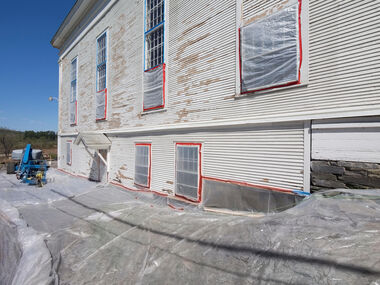What Really Happens if Deck Staining Isn't Maintained as Recommended

It’s finally that time of year again to set up your deck and enjoy the fresh air. If it’s been several years since you last stained your deck, however, you might not get as much enjoyment out of it as time goes on. Experts recommend re-staining your deck every 2-3 years – this is just a rule of thumb, and failing to adhere to it won’t immediately put your deck in dire straits. That said, getting loose with your deck maintenance routine can contribute to larger problems down the road. When it comes to dishing out for major repairs and replacements, the cost to stain a deck will seem quaint by comparison. Let’s discuss what might actually happen to your deck if you don’t keep up with deck staining as recommended.
What Happens if You Don't Stain Your Deck
Your Deck Will Lose its Luster
Applying a quality deck stain can significantly improve your deck’s appearance, providing a subtle tint and glossy finish that enhances your place’s curb appeal. Of course, even the best deck stain has a shelf life. Over time, the sun’s rays will dull and fade the finish. When this happens, a fresh coat of stain can quickly restore your deck’s beauty. If you decide to leave your deck alone instead, expect the loss of color and shine to progress until your deck takes on a gray-ish, green-ish hue. This coloration (or lack of color) isn’t necessarily an issue on its own, but it’s often followed by deterioration that takes a toll on your deck’s integrity itself.
Your Deck Becomes More Vulnerable to Environmental Threats
While deck stain enhances your deck’s appearance, aesthetic improvement isn’t its primary function. Deck stain products permeate the wood’s pores to block off moisture and small particles while also shielding its surfaces from ultraviolet (UV) rays, pests, and other outdoor threats. You can think of deck stain as an adhesive skin that keeps the wood underneath from fracturing, rotting, or otherwise falling apart. When this barrier breaks down, your wooden deck is wholly exposed to the elements. Wood-boring pests may begin carving out holes in your deck’s boards, moisture from rain and snow will seep into the wood’s pores and cause rot and warping, and harsh sunlight will cause permanent discoloration. These various issues won’t occur immediately, and your deck might last a long time despite such exposure depending on your region’s climate. Still, maintaining a protective layer of stain greatly mitigates all of these risks and extends your deck’s lifespan.
You’ll Have a Harder Time Cleaning Your Deck’s Surfaces
Another advantage afforded by deck stain is its smooth texture. When properly coated, your deck will become more resistant not only to moisture but also to dirt and dust. And when your deck’s surfaces get a bit dirty, you’ll find that sweeping a stained deck requires little effort. A bare deck, on the other hand, is trickier to maintain as dirt and dust cling to the wood’s pores. One way to make regular deck maintenance easier on yourself, then, is to take care of this periodic deck maintenance: staining it every 2-3 years.
Is It Too Late to Restore Your Deck?
If it’s been much longer than the recommended three years since you last stained your deck, you might wonder if it’s even worth getting back on track. Fortunately, unless your deck is in a total state of disrepair, it’s virtually never too late to provide it with a fresh coating. You might need to take care of some repairs and minor replacements beforehand, of course. If you’re not sure how to properly prepare your deck for fresh coatings or how to apply deck stain the right way, the experts at Anderson Painting can assess, repair, prep, and stain your deck.
To learn more about us and all we do for our Raleigh, NC, clients, call today at 919-610-1855 or email us at info@andersonpaintingnc.com!




